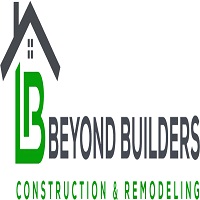In an era where environmental concerns are paramount, green building has emerged as a transformative approach in the construction industry. Green building practices focus on creating structures that are environmentally responsible, resource-efficient, and healthy for their occupants. This guide delves into the principles of green building, its benefits, and practical strategies to implement sustainable practices in your next construction project.
Understanding Green Building
What is Green Building?
Green building, also known as sustainable building, involves designing, constructing, and operating buildings in ways that reduce environmental impact and enhance the well-being of the occupants. This approach incorporates energy efficiency, water conservation, waste reduction, and the use of sustainable materials.
Core Principles
The core principles of green building include:
- Energy Efficiency: Minimizing energy consumption through design and technology.
- Water Conservation: Reducing water usage and promoting water reuse.
- Sustainable Materials: Using materials that are eco-friendly, recycled, or have a low environmental impact.
- Indoor Environmental Quality: Ensuring healthy indoor air quality and comfortable living conditions.
- Waste Reduction: Minimizing waste during construction and promoting recycling.
The Benefits of Green Building
Environmental Benefits
Green building significantly reduces the environmental footprint of construction projects. By using less energy, water, and raw materials, and generating less waste, green buildings help combat climate change and preserve natural resources.
Economic Benefits
While the initial costs of green building might be higher, the long-term economic benefits are substantial. Energy-efficient buildings reduce utility bills, and sustainable practices can lower maintenance costs. Additionally, green buildings often have higher property values and can attract environmentally conscious tenants or buyers.
Health and Well-being
Green buildings promote healthier living and working environments. Improved air quality, natural lighting, and the use of non-toxic materials can enhance the physical and mental well-being of the occupants, leading to increased productivity and comfort.
Strategies for Green Building
Energy Efficiency
Incorporating energy-efficient designs and technologies is a cornerstone of green building. Strategies include:
- Insulation and Sealing: Proper insulation and sealing of the building envelope to reduce energy loss.
- Energy-Efficient Windows: Using double or triple-glazed windows to improve thermal performance.
- Renewable Energy: Installing solar panels or wind turbines to generate renewable energy on-site.
- Smart Lighting: Using LED lighting and smart controls to reduce energy consumption.
Water Conservation
Implementing water-saving measures can significantly reduce the environmental impact of a building. Techniques include:
- Low-Flow Fixtures: Installing low-flow toilets, faucets, and showerheads.
- Rainwater Harvesting: Collecting and reusing rainwater for irrigation and other non-potable uses.
- Greywater Systems: Recycling greywater from sinks, showers, and laundry for landscape irrigation.
Sustainable Materials
Choosing sustainable materials is crucial for reducing the ecological footprint of a building. Considerations include:
- Recycled Materials: Using materials made from recycled content, such as recycled steel or reclaimed wood.
- Local Materials: Sourcing materials locally to reduce transportation emissions.
- Low-VOC Products: Using paints, adhesives, and finishes with low volatile organic compound (VOC) levels to improve indoor air quality.
Waste Reduction
Minimizing waste during construction and operation is a key aspect of green building. Strategies include:
- Construction Waste Management: Implementing a waste management plan to recycle and reuse materials.
- Modular Construction: Using prefabricated components to reduce on-site waste and improve efficiency.
- Deconstruction: Dismantling buildings carefully to salvage materials for reuse.
Certification and Standards
LEED Certification
The Leadership in Energy and Environmental Design (LEED) certification is a globally recognized standard for green buildings. Projects are rated based on their sustainability performance, covering aspects such as energy efficiency, water conservation, and indoor environmental quality. Achieving LEED certification can enhance a building’s marketability and demonstrate a commitment to sustainability.
Other Standards
In addition to LEED, other green building standards include:
- BREEAM: Building Research Establishment Environmental Assessment Method, widely used in Europe.
- WELL Building Standard: Focuses on the health and well-being of building occupants.
- Green Globes: A flexible, web-based rating system that supports sustainable design and operations.
Conclusion
Green building is not just a trend but a necessary shift towards more sustainable and responsible construction practices. By embracing green building principles, you can reduce the environmental impact of your projects, realize economic benefits, and create healthier living and working spaces. Whether you are a developer, architect, or homeowner, adopting green building strategies is a step towards a more sustainable future. Start your journey today and contribute to the global effort to protect our planet and improve quality of life for all.





